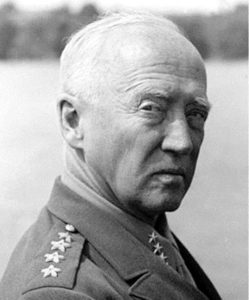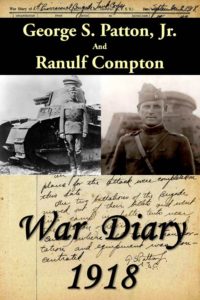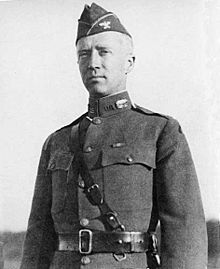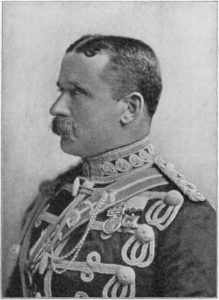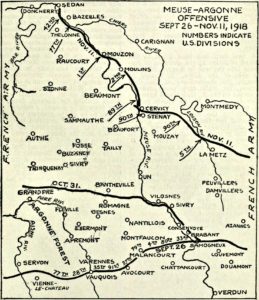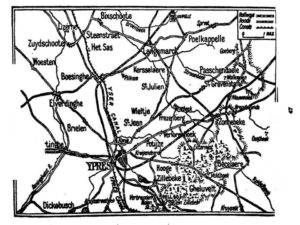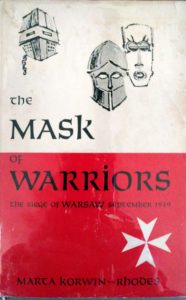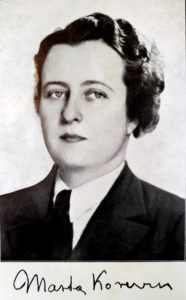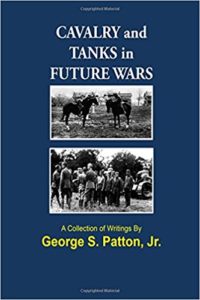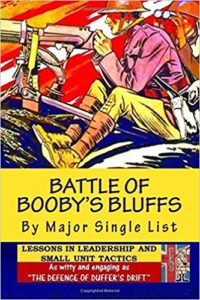Public Affairs, Seventh Army, sends message detailing accident report —Patton’s Driver noticed no signal from truck driver of his intention to turn—His condition progressing satisfactorily.
* * * *
FROM CONKLIN ACTING PRO SEVENTH ARMY TO INFORMATION ROOM PRD USFET FOR TRIBBLE STOP ONE COPY TO AFN FRANKFURT STOP AS GENERAL GEORGE S. PATTON’S CONDITION CONTINUED TO IMPROVE TODAY IN THE HUNDRED THIRTIETH STATION HOSPITAL AT HEIDELBERG CMA FURTHER DETAILS OF THE ACCIDENT IN WHICH HE WAS SERIOUSLY INJURED LAST SUNDAY NEAR MANNHEIM WERE MADE AVAILABLE AT HEADQUARTERS SEVENTH ARMY CMA WESTERN MILITARY DISTRICT. THE OFFICIAL ACCIDENT REPORT COMPILED BY MEMBERS OF THE EIGHT HUNDRED EIGHTEENTH MILITARY POLICE COMPANY ON THE SCENE WAS MADE PUBLIC TODAY. FIRST LIEUTENANT PETER BABALAS CMA WHO SIGNED THE REPORT AS DUTY OFFICER RECORDED HIS OPINION THAT QUOTE THE ACCIDENT WAS CAUSED BY CARELESSNESS ON THE PART OF BOTH DRIVERS PD UNQUOTE THE REPORT SHOWED THAT GENERAL PATTON’S NINETEEN HUNDRED THIRTY EIGHT CADILLAC SEDAN WAS BEING DRIVEN SOUTH ON HIGHWAY N THIRTY EIGHT JUST NORTH OF MANNHEIM AT ELEVEN FORTY FIVE LAST SUNDAY MORNING. LIEUTENANT BABALAS CMA AS THE INVESTIGATING OFFICER CMA GAVE IT AS HIS OPINION THAT THE GENERAL’S CAR WAS BEING DRIVEN AT A SPEED OF APPROXIMATELY THIRTY FIVE REPEAT THIRTY FIVE MILES PER HOUR PD PRIVATE FIRST CLASS HORACE L WOODRING OF THE COMMANDING GENERAL’S SECTION OF FIFTEENTH ARMY CMA COMMANDED BY GENERAL PATTON CMA WAS AT THE WHEEL PD THE TWENTY THREE YEAR OLD DRIVER WHO COMES FROM SPURGIS KENTUCKY CMA WAS RATED AS AN EXCELLENT DRIVER AND HAD A DRIVER’S LICENSE IN HIS POSSESSION PD MAJOR GENERAL HOBART R GAY CMA CHIEF OF STAFF OF FIFTEENTH ARMY CMA WAS RIDING IN THE BACK SEAT WITH GENERAL PATTON PD AS THE GENERAL’S CAR PASSED A LARGE QUARTERMASTER DUMP IN A SECTION OF MANNHEIM KNOWN AS KAFERTAL A TWO AND ONE HALF TON GMC TRUCK DRIVEN BY T/5 ROBERT L. THOMPSON CMA TWENTY TWO YEARS OLD OF THREE ZERO NINE FIVE HIGHLAND AVENUE CAMDEN CMA NEW JERSEY BEGAN A LEFT TURN INTO THE QUARTERMASTER DUMP PD THE CARGO TRUCK CMA BELONGING TO THE HUNDRED FORTY FIRST SIGNAL COMPANY OF THE FIRST ARMORED DIVISION WAS GOING TEN REPEAT TEN MILES PER HOUR IN THE OPINION OF THE INVESTIGATING OFFICER PD IT CARRIED FRANK KRUMMER CMA A CIVILIAN EMPLOYEE OF THE SIGNAL COMPANY CMA AS A PASSENGER IN THE BODY OF THE TRUCK PD THE TRUCK HAD ALMOST COMPLETED ITS LEFT TURN ON THE THIRTY DASH THREE DASH FOOT DASH WIDE COBBLESTONED HIGHWAY WHEN IT WAS STRUCK ON THE RIGHT DASH HAND SIDE BY THE SEDAN CMA WHICH WAS ON ITS OWN SIDE OF THE HIGHWAY PD THE ACCIDENT OCCURRED AT ELEVEN FORTY FIVE AND BOTH THE CONDITION OF THE ROAD AND THE CONDITION OF THE TWO VEHICLES WAS LISTED AS QUOTE EXCELLENT UNQUOTE IN THE OFFICIAL REPORT PD T/5 THOMPSON HAD AN OPERATOR’S LICENSE IN HIS POSSESSION AND WAS RATED AS AN EXCELLENT DRIVER PD THE IMPACT DAMAGED THE FRONT OF THE GENERAL’S SEDAN INCLUDING THE MOTOR BUT DID NOT BREAK ANY OF THE GLASS IN THE VEHICLE. THE CARGO TRUCK HAD ITS DRIVE SHAFT DAMAGED CMA ITS GASOLINE TANK BENT AND ITS BATTERY CASE BROKEN PD THE TRUCK WAS FIRST IMPOUNDED BY THE MILITARY POLICE AND LATER RELEASED TO ITS UNIT CMA THE HUNDRED FORTY FIRST SIGNAL COMPANY PD GENERAL PATTON’S CAR WAS TAKEN TO THE MILITARY POLICE MOTOR POOL AND LATER TURNED OVER TO THE SEVENTH ARMY COLLECTING POINT PD THE ACCIDENT REPORT SHOWED THAT THE TRUCK DRIVER HAD SIGNALLED A LEFT TURN AS HE APPROACHED THE QUARTERMASTER DUMP AND THAT GENERAL PATTON’S DRIVER HAD NO NEED TO SIGNAL SINCE HE WAS PROCEEDING STRAIGHT SOUTH PD THE REPORT ENTRY ON THE CONDITION OF DRIVERS WAS QUOTE SOBER UNQUOTE PD MAJOR GENERAL GAY’S ACCOUNT OF THE ACCIDENT FOLLOWS IN FULL SMCLN QUOTE ON SUNDAY DECEMBER NINE NINETEEN HUNDRED FORTY FIVE GENERAL PATTON AND I WERE PROCEEDING SOUTH ON THE FRANKFURT DASH MANNHEIM ROAD IN A CADILLAC CAR DRIVER [sic] BY PVT 1ST CL HORACE L WOODRING PD WE WERE FOLLOWED IN A ONE DASH QUARTER DASH TON TRUCK BY SGT SPRUCE PD AT APPROXIMATELY ELEVEN FORTY DASH FIVE WE SLOWED DOWN VERY APPRECIABLY CMA PERHAPS TO TEN MILES AN HOUR CMA TO CROSS THE RAILROAD TRACKS WHICH ARE ON THE NORTHERN OUTSKIRTS OF MANNHEIM PD SHORTLY AFTER WE CROSSED THE RAILROAD TRACKS CMA WHEN AGAIN WE SLOWED DOWN CMA OR PERHAPS WE HAD NOT PICKED UP SPEED PD SGT SPRUCE IN THE ONE DASH QUARTER DASH TON TRUCK PASSED US AND MOTIONED FOR US TO FOLLOW HIM CMA AS HE KNEW THE ROUTE FROM THERE ON AND WE DID NOT PD APPROXIMATELY AT THIS TIME GENERAL PATTON SAID QUOTE LOOK AT ALL THE DERELICT VEHICLES UNQUOTE WHICH WERE IN PARKS ALONG BOTH THE RIGHT AND LEFT SIDES OF THE ROAD PD HE FURTHER REMARKED QUOTE HOW AWFUL WAR IS PD THINK OF THE WASTE PD UNQUOTE ALMOST IMMEDIATELY CMA WHILE I WAS LOOKING TO THE LEFT CMA HE SAID CMA QUOTE LOOK AT THAT UNQUOTE PD I LOOKED UP JUST IN TIME TO SEE A TWO DASH AND DASH AND ONE DASH HALF DASH TON TRUCK TURNING AT A NINETY DEGREE ANGLE ACROSS THE ROAD IN FRONT OF US PD I HAD TIME TO SAY QUOTE SIT TIGHT UNQUOTE PD THEN WE CRASHED PD GENERAL PATTON WAS APPARENTLY THROWN FORWARD AND THEN BACKWARD CMA BECAUSE HE FELL IN MY ARMS WITH HIS HEAD TO THE LEFT CMA MY RIGHT ARM AROUND HIS SHOULDERS PD I WAS AT THAT TIME FACING APPROXIMATELY HALF TO THE RIGHT PD HE WAS BLEEDING PROFUSELY FROM WOUNDS OF THE SCALP AND FOREHEAD. UNQUOTE. SIGNED HOBART R. GAY MAJOR GENERAL U S ARMY PD GENERAL PATTON’S DRIVER CMA PFC WOODRING GAVE A SWORN STATEMENT TO LIEUTENANT BABALAS PD HIS STATEMENT FOLLOWS IN FULL SMCLN QUOTE EYE PFC HORACE L WOODRING CMA DRIVER FOR GENERAL PATTON WAS PROCEEDING FROM BAD NAUHEIM TOWARD MANNHEIM WITH THE GENERAL AND MAJOR GENERAL GAY ON THE NINTH DECEMBER NINETEEN HUNDRED FORTY FIVE AT APPROXIMATELY TWELVE HUNDRED HOURS I WAS TRAVELLING ON N DASH THIRTY EIGHT (KAFERTALSTRASSE) NEAR THE MANNHEIM CLASS TWO AND FOUR WAREHOUSE PD ABOUT TWENTY FIVE FEET FROM THE ENTRANCE A TWO DASH AND DASH ONE DASH HALF DASH TON GMC WENT TO THE LEFT COMING FROM THE OPPOSITE DIRECTION INTENDING TO ENTER THE WAREHOUSE PD I NOTICED NO HAND SIGNAL OR ANY PREVIOUS INTENTION ON THE PART OF THE OTHER DRIVER INDICATING A DESIRE TO MAKE A LEFT DASH HAND TURN PD I WAS TRAVELLING AT APPROXIMATELY THIRTY TO THIRTY FIVE MILES PER HOUR PD I ATTEMPTED TO STOP BUT BEFORE I COULD COMPLETELY COME TO A FULL HALT CMA I COLLIDED WITH THE RIGHT SIDE OF THE TRUCK NEAR THE GAS TANK PD UNQUOTE SIGNED BY PFC HORACE L WOODRING PD T/5 TOMPSON CMA THE TRUCK DRIVER CMA ALSO MADE A SWORN STATEMENT TO SECOND LIEUTENANT HUGH O LAYTON OF THE EIGHT HUNDRED EIGHTEENTH MILITARY POLICE COMPANY PD HIS STATEMENT FOLLOWS IN FULL SMCLN QUOTE AT APPROXIMATELY TWELVE HUNDRED HOURS ON NINE DECEMBER NINETEEN HUNDRED FORTY FIVE EYE T/5 ROBERT L THOMPSON 42085092 WAS TRAVELLING NORTH ON HIGHWAY N THIRTY EIGHT PD I WAS APPROACHING THE CLASS TWO AND FOUR QM DEPOT PD IN MAKING MY LEFT TURN FROM THE HIGHWAY I NOTICED A GENERAL’S CAR APPROACHING ME PD AS I HAD ALREADY STARTED MY TURN I COULD NOT AVOID THE CAR HITTING THE REAR OF THE TWO DASH AND DASH ONE DASH HALF DASH TON TRUCK WHICH I WAS DRIVING PD I DID NOT NOTICE THE CAR UNTIL I HAD STARTED TO TURN PD THE WIDTH OF THE HIGHWAY AT THE POINT OF THE ACCIDENT IS APPROXIMATELY THIRTY DASH THREE FEET PD UNQUOTE SIGNED BY T/5 ROBERT L. THOMPSON BOTH DRIVERS WERE REPORTED BACK WITH THEIR UNITS YESTERDAY DASH THURSDAY DASH MORNING PD NO DISCIPLINARY ACTION HAS BEEN TAKEN AGAINST EITHER DRIVER AND NO REASON FOR HOLDING EITHER ONE WAS FOUND BY THE MILITARY POLICE WHO INVESTIGATED ON THE SCENE LAST SUNDAY PD GENERAL PATTON’S CONDITION WAS REPORTED FROM THE HUNDRED THIRTIETH STATION HOSPITAL AT NINE O’CLOCK YESTERDAY DASH THURSDAY DASH MORNING IN THE FOLLOWING BULLETIN SMCLN QUOTE TEMPERATURE ONE HUNDRED PULSE SIXTY TWO RESPIRATION TWENTY PD HAD A GOOD NIGHT PD CHEERFUL AND ALERT PD GENERAL CONDITION REMAINS SATISFACTORY PD NO COMPLICATIONS PD NEUROLOGICAL STATUS REMAINS ABOUT THE SAME PD UNQUOTE MRS PATTON CMA WIFE OF THE GENERAL IS REMAINING CLOSE ON THE SCENE AND SAW HER HUSBAND AT THE HOSPITAL AGAIN THIS MORNING PD HER PLANS CALL FOR HER TO REMAIN IN THE VICINITY OF THE HOSPITAL INDEFINITELY PD COL LOREN JENKS, CHIEF CHAPLAIN OF SEVENTH ARMY HEADQUARTERS AND LT. COL PAUL MAURER CMA RELIGIOUS ADVISER FOR MILITARY GOVERNMENT IN THE WESTERN MILITARY DISTRICT WENT TO SEE GENERAL PATTON AT THE HOSPITAL LAST SUNDAY PD SINCE NEITHER CHAPLAIN KNEW THE GENERAL PERSONALLY THEY LEFT WORD THAT THEY HAD CALLED CMA AND DEPARTED WITHOUT SEEING HIM PD WHEN THE REV FATHER ANDREW WHITE CMA CATHOLIC CHAPLAIN AT THE HOSPITAL CMA APPROACHED HIS ROOM CMA GENERAL PATTON THOUGHT THE CALLER WAS HIS OLD FRIEND FATHER JAMES O’NEIL CMA FORMER CHAPLAIN WITH THE THIRD ARMY WHO IS NOW CHAPLAIN OF THE FIRST SERVICE COMMAND IN BOSTON PD QUOTE SEND HIM IN AND LET’S GET GOING QUOTE GENERAL PATTON SAID PD CHAPLAIN WILLIAM P PRICE CMA THE PROTESTANT CHAPLAIN AT THE HOSPITAL CMA ARRIVED FROM THE EIGHTY FOURTH DIVISION SOON AFTER GENERAL PATTON WAS ADMITTED PD HE HAD BEEN ON ORDERS TO REPORT TO THE HOSPITAL FOR DUTY FROM THE DIVISION CMA AND THE NEWS OF THE GENERAL’S ACCIDENT SPEEDED HIS ARRIVAL PD HE IS AN EPISCOPALIAN CMA OF THE SAME FAITH AS GENERAL PATTON PD ENDIT. SIGNED CONKLIN ACTING PRO SEVENTH ARMY
